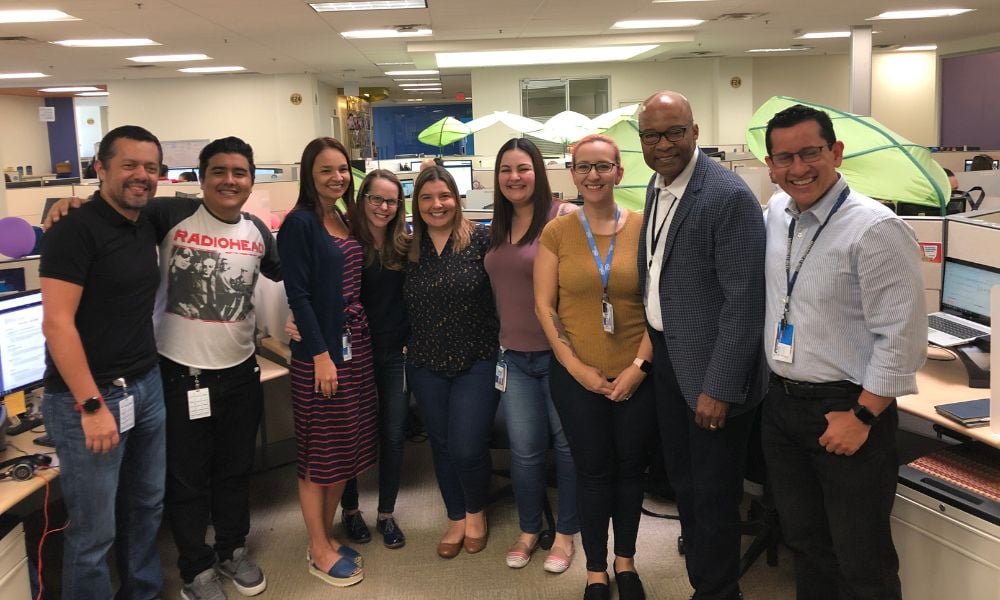
'I've seen more dogs, cats and kids than I'd have imagined,' says Intel's VP HR

The past few years have brought a plethora of challenges across all industries, demanding resilience and adaptability in order to weather the storm. For HR professionals in particular, this meant taking the time to explore more effective organizational strategies – ones which not only enhance employee engagement but also foster a sense of belonging from the top down.
Brian Little, VP of HR - Corporate Functions at Intel, spoke to HRD on his company’s transformational journey – namely on how his HR team managed to connect a globally dispersed workforce in a time of mass disruption.
This all began with shaking up their HR tools, techniques and tech.
“We’ve become experts at being able to have meetings and sharing virtually in a way that's engaging and entertaining at times,” says Little. “It’s helping people feel connected to what we're trying to do and making sure they feel heard. in some ways we actually improved how people feel connected to the organization.”

This connectivity was hard to come by in the midst of the pandemic. For many, feelings of isolation and anxiety seemed to rise – as did burnout and extreme overtime. Data from the American Psychological Association cites that through the pandemic, 79% of employees were suffering from workplace stress, with three in five employees saying that impacted them greatly. This manifested in cognitive exhaustion (36%), a lack of interest and energy (26%) and a reduced effort at work (19%).
At Intel, having essential tools in place was what helped their people not only survive but thrive through the chaos. As Little tells HRD, the tech giant recognized the need to equip managers and leaders with the skills to maximize the potential of virtual tools. What’s more, Intel time and effort in educating and empowering managers, enabling them to effectively leverage that technology to connect personally with teams on other sides of the world.
"We’ve focused on ensuring our managers understand how to get the most out of these tools, allowing for effective communication and collaboration,” says Little.
The virtual work environment provided unexpected opportunities for colleagues to understand their teams more – offering an insight into their home and family life. And, as Little explains, seeing people in their natural environment actually fostered this sense of comradery.
“I've seen more dogs and cats and kids in the last three years than I would have ever imagined. It’s been great to understand the whole person and what motivates them, why they're coming to work, what they're excited about. It makes an organization feel more like a family rather than a corporation.”

By embracing these little nuances, organizations like Intel have witnessed a transformation in their workplace culture. But it’s not all clear skies and rainbows. As Little tells HRD, the semiconductor industry, like many others, is facing challenges in balancing supply and demand.
“We had a great run during COVID because people needed to refresh all of their data and their laptops,” says Little. “That was great for us. Now we're trying to balance out what's the right level of supply versus the market demand - and do that well. So while we built this big organization, the demand flattened out pretty quickly – which surprized the whole industry.”
Cutting staff, as Little tells HRD, is always a last resort. However, it’s the same story across the board for American tech giants. Waves of layoffs have rocked the sector, with some organizations being accused of over hiring during the pandemic without thought for the eventual downfall.
However, at Intel, they’re trying to look at how to best manage the complex situation.
“We're trying to get to the appropriate size to meet our demand, but also not cutting so deep into our organization that we actually lose our capability and not serve our customers well,” he says.
“We want to be able to bounce back when the market improves, which we do believe will happen, but at the same time as we're managing our expenses and managing our overall demand. As such, we have to be careful about how many people we hire, people we retain, and ensuring that we're doing a good job on that.”